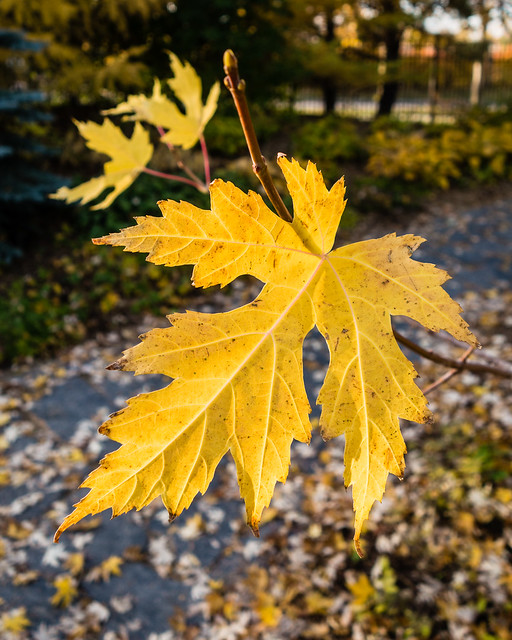A stroll down Spadina Crescent south of the weir on a summer evening is a delight. The tall elms on either side of the street provide cool, dappled shade and there is a constant chorus of birds. With the help of SOS Trees Coalition (formerly known as SOS Elms Coalition), Saskatoon’s elms are healthy and well maintained.
The situation could have been very different if a group of concerned citizens had not stepped forward to speak for the trees. SOS Elms was established in 1992 in response to a growing threat from Dutch Elm Disease, which was making its way across North America, killing elm trees in its path.
The American elm is an ideal urban tree. It thrives in our climate, tolerating urban stresses, such as soil compaction, road salt, and poor drainage. But it can’t fight Dutch Elm Disease (DED), a fungus that blocks the tree’s vascular system, which carries water and food to all parts of the tree. DED is spread by the elm bark beetle when it lays eggs in fungus-infected elms. When the new adults emerge, they carry the fungus to healthy trees. Spread of the disease can be halted by not bringing in firewood from other parts of the country and pruning dead or dying wood. (To avoid spreading disease, elm trees should never be pruned between April 1 and August 31.)
Advocacy efforts by SOS Elms have made a huge difference. The City now prunes its urban trees every 7 years, rather than every 50, and hires students in the summer to survey the city, looking for diseased trees or illegal firewood. One tree had to be removed in 2015, and just this week another case was confirmed. But the City foresters have identified the infected tree and are taking it down along with a few others close by to ensure the fungus hasn’t spread. This is good DED management and we can only hope that we can continue to contain this disease through diligent monitoring.
Based on their success in advocating for elms, the Coalition decided to expand its reach to protecting and fostering all urban trees. Advocacy continues to be an important part of their mandate. Faced by the wholesale destruction of the trees along the 33rd Street rail line, SOS Trees, along with other citizens approached the City, CP Rail, and the media. CP Rail eventually issued an apology and a committee has been set up to make remediation arrangements, including planting low-growing bushes and hopefully some trees. The City of Saskatoon has already planted new trees along the public right of way.
An ongoing area of concern is providing protection for existing trees when construction work is underway. Most developers have caught on to the fact that they should install protective fencing around established trees on city boulevards. However, they frequently fail to protect the trees’ roots, which extend out to the drip line. “Driving heavy equipment over the area around the tree damages the roots by compacting the soil,” explains Linda Moskalyk, president of SOS Trees. “The damage may not be immediately apparent, but a few years down the road, you’ll see die-off and eventual death.” Developers can avoid compacting the soil and damaging the roots by laying down a thick layer of mulch and not digging within 3 metres of the trunk.
Trees play an important role in creating a livable city. They lower the heat on hot days, reduce air pollution, and promote biodiversity by providing food and shelter for birds, insects, and small mammals. They also improve our mental health and are a source of beauty. But trees have a tough time in an urban prairie environment and there are only a limited number of species that can withstand the harsh winters, compacted soil, and poor drainage. Disease also plays a role. A cottony ash psyllid outbreak has killed over 7000 ash trees in recent years and the City is struggling to replace them. Residents can play a role by planting trees in their yards and caring for their boulevard trees.
SOS Trees pairs its advocacy efforts with educational initiatives. The Saskatoon Tree Tour booklet highlights 24 of Saskatoon’s most impressive trees. Copies of the booklet are available for a small donation from several locations around the city. SOS Trees has also led walking and cycle tours. They are currently working with Meewasin Valley Authority to develop a variety of different activities to celebrate Arbour Week in the spring.
If you have questions about trees, don’t hesitate to contact SOS Trees. They’ll be happy to answer your questions, whether it’s how to care for a tree or the choice of a new one. You can follow SOS Trees on Facebook and they welcome new members.
See Also
Saskatoon's Urban Forest, EcoFriendly Sask
Saskatoon Tree Tour, SOS Trees
A Guide to Nature Viewing Sites In and Around Saskatoon, Saskatoon Nature Society
Urban Forestry Booklet, City of Saskatoon
Urban Forest, City of Saskatoon
Prairie Regional Urban Forest Update, July 2020, Tree Canada


